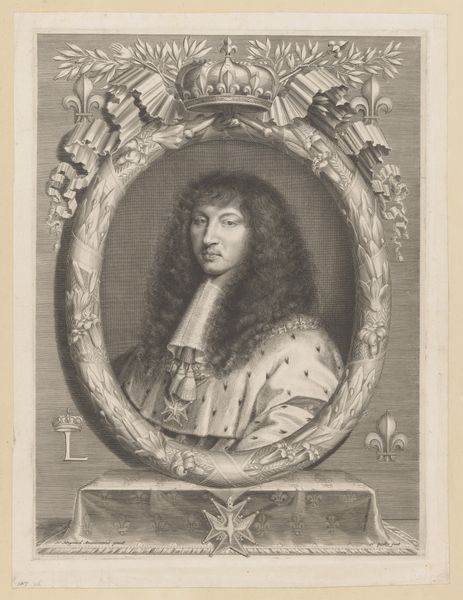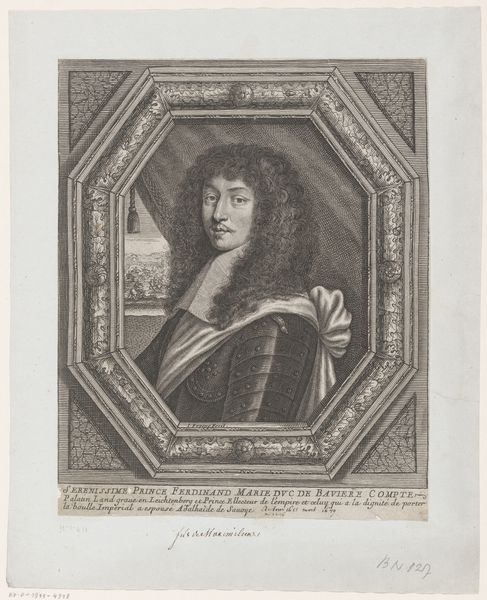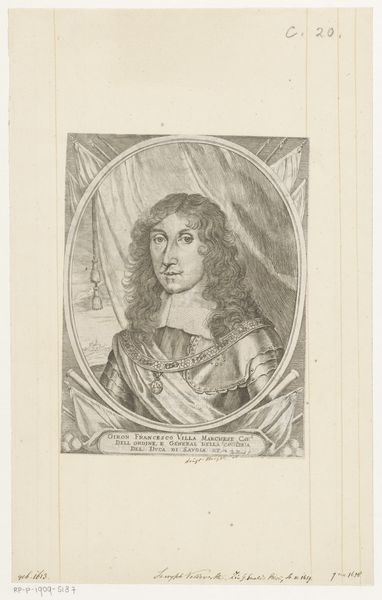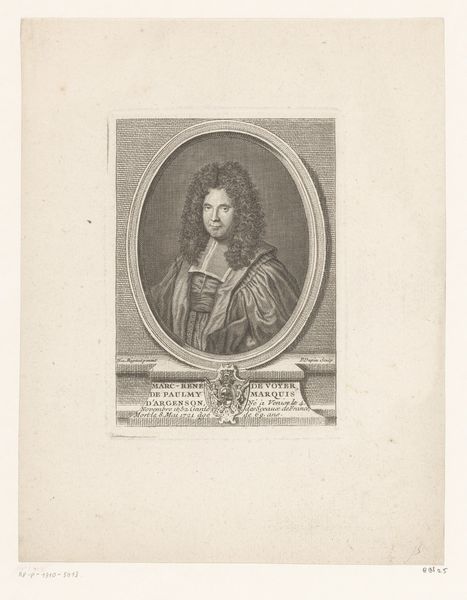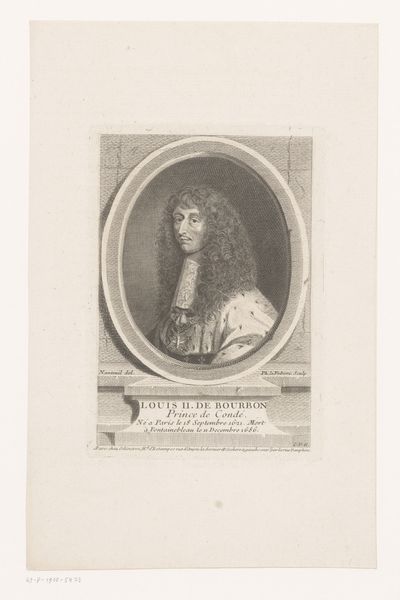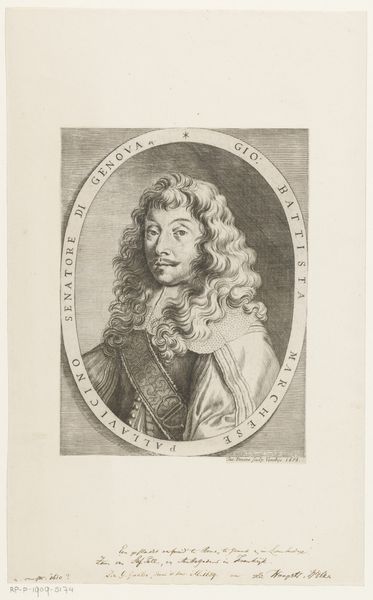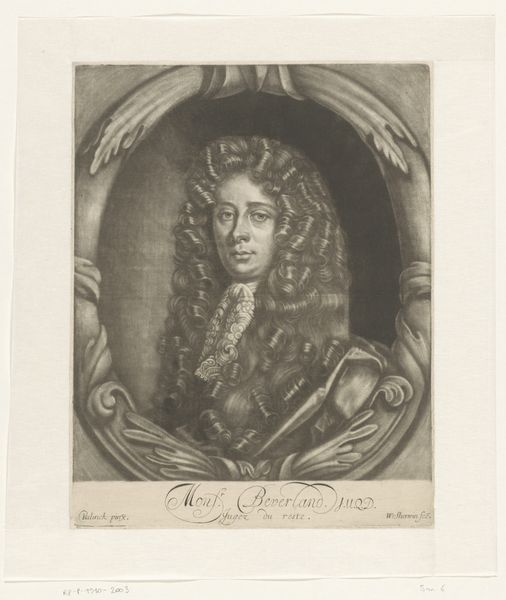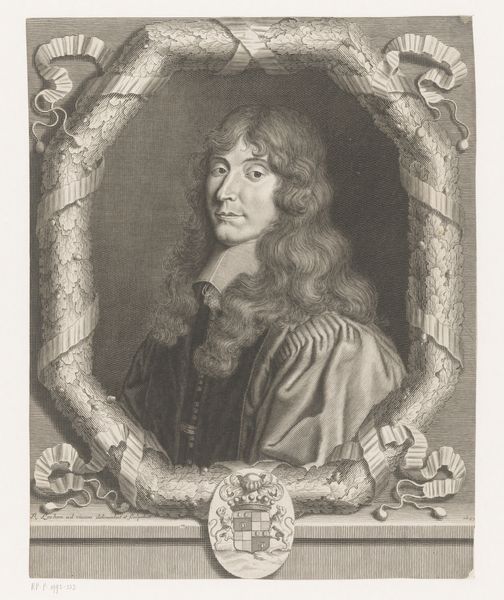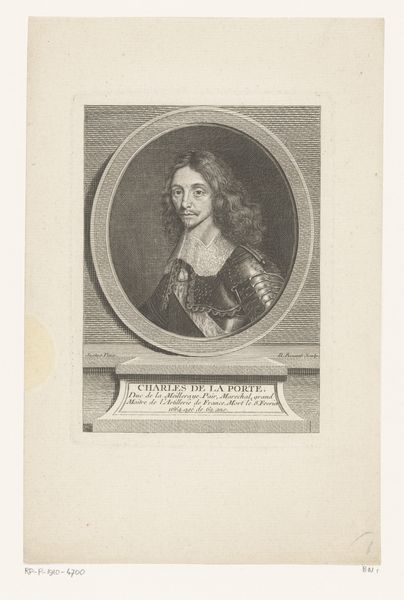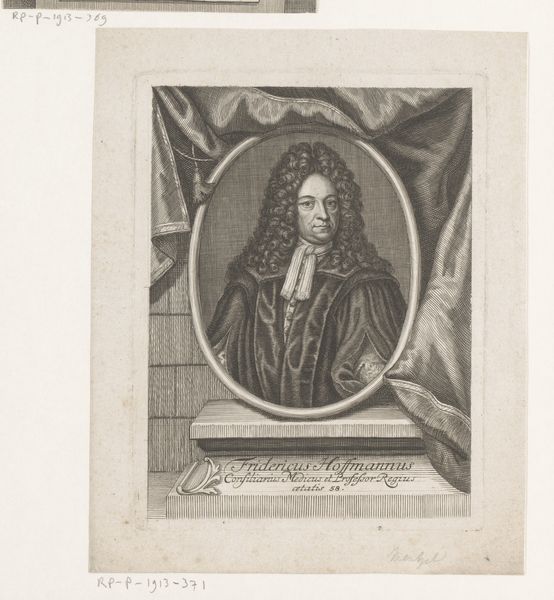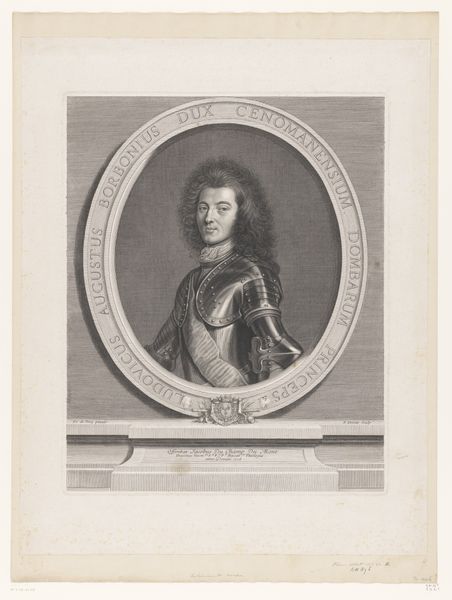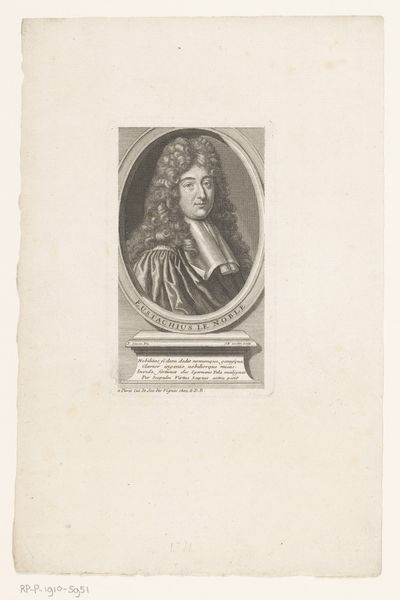
Portret van Lodewijk XIV omgeven door een sierlijst met arabesken c. 1640 - 1680
0:00
0:00
drawing, engraving
#
portrait
#
pencil drawn
#
drawing
#
light pencil work
#
baroque
#
pencil sketch
#
pencil drawing
#
engraving
Dimensions: height 242 mm, width 223 mm
Copyright: Rijks Museum: Open Domain
Curator: This drawing, held here at the Rijksmuseum, offers us a glimpse of Louis XIV, dating from sometime between 1640 and 1680, rendered in delicate pencil and engraving, all framed by intricate arabesques. Editor: My first thought? Regal in repose, even in monochrome. The decorative border gives it the feel of something precious, like a cameo held close. Curator: It’s true. There’s something quite intimate about it, despite depicting such a towering figure. One can almost imagine the artist meticulously working, each line imbued with intention. It shows what kind of power Louis the XIV wielded through artistic patronage, ensuring artisans benefited directly from commissions like this engraving. We can think about how labor shaped the image and identity. Editor: I love how the artist has captured Louis’s essence with what appears to be light pencil work and a steady hand, giving an idea about the access the artisan had to the king for them to draw him like that. The contrast of textures—the king's voluminous wig against his sharp armor—feels so Baroque in its exuberance. Curator: Indeed. But let’s think beyond courtly commissions and trace how prints like this travelled far, reaching broader audiences through networks of artisans and merchants. Who owned these engravings? Were they status symbols for wealthy merchants hoping to ape royal fashion, or templates copied for popular crafts? What was the impact on material culture across seventeenth-century Europe? Editor: That's fascinating. Seeing how that artistic output influences everyday material life—it turns an intimate portrait into a political object, diffused into social culture. Curator: Precisely! Think of the materials: the quality of the paper, the types of ink. Those, too, tell us so much. And let us not forget the hand of the engraver! Their labor—perhaps underrecognized—is central to this artwork's enduring presence. Editor: So, less "Sun King," more the glow of meticulous craftsmanship. This piece becomes a mirror reflecting not only power but also the very processes that shape how we perceive it. I might not have realized what it actually took. Curator: Well said! Let's remember the network that makes and diffuses artwork through different classes of consumers. A reflection, truly.
Comments
No comments
Be the first to comment and join the conversation on the ultimate creative platform.
